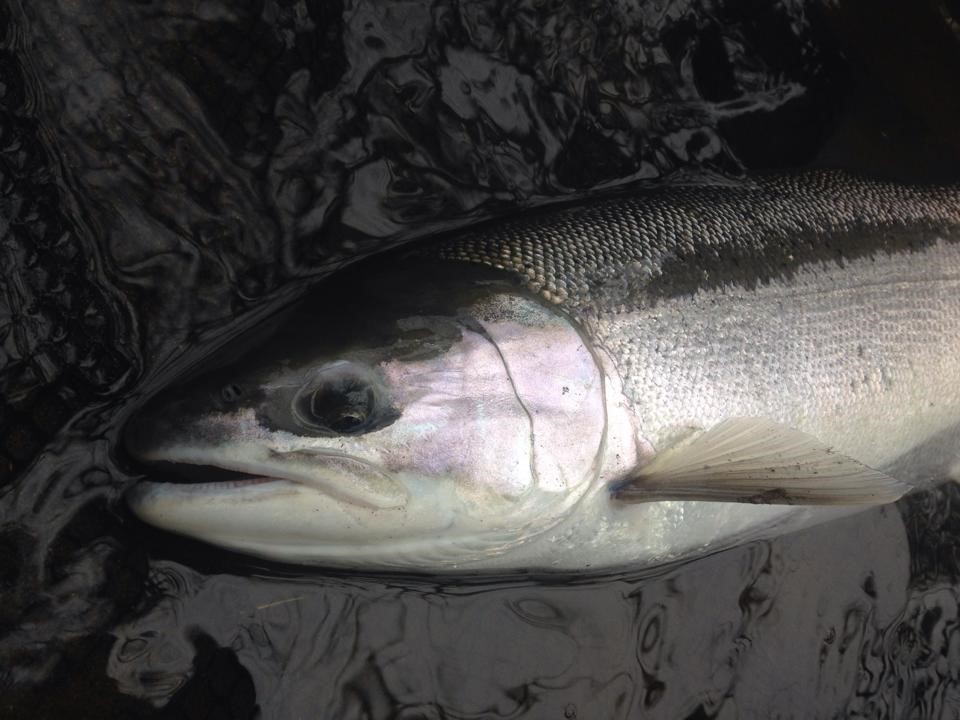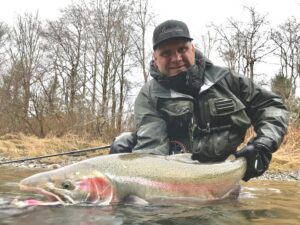The sport of fishing is a lifelong journey of learning throughout one’s life as we pursue our favorite fish species be it river or lake. No matter what you’re fishing for we all have one thing in common, the fishing Hook. Whether fishing mono, fluorocarbon, braid or a fly line. Spinning reel or bait casting reel we all differ on what we like to fish with.
Man invented fishhooks 20,000 years ago, and as years passed man kept perfecting the Hook. Today, the avid angler enjoys the best fishing hooks of all time. The manufacturing process kept improving over time and we now have hundreds of different styles for certain types of fish and methods. It amazes me on the various opinions about hooks and how personal the hook has become to many anglers. As an example look at the archery industry on broadheads the opinions will vary across the board, on which one is the best?
In 2005 “Forbes” voted the fishing Hook was in the top 20 tools of all time that helped man. Today manufacturers have many metal choices to make hooks. High carbon steel, steel alloyed with vanadium or even stainless steel just to name a few. A Hook is still very soft after being manufactured, the hooks get heated again and placed in oil, in a high-density oven for the hardening process. Once the hooks come out hard and brittle they need to go into another oil bath but this time at 300 degrees for 1 hour to complete the tempering process. The goal is to end up with a Hook that’s strong but yet supple.
If the person making these hooks at the factory isn’t on their game. And do not leave the hooks in for a specific time and temperature to complete the final Hook process. The angler could end up with hooks that are brittle and fail. For the record, I believe harder metals are more brittle than others. The harder the metal instead of flex you could have a break. Hence why the factory must get it right during the hardening and tempering process. I have seen and heard of a bad batch of hooks from the factory time to time with all manufacturers. And just because your favorite hook has never failed you yet does not mean it doesn’t happen or it will never happen. All metals and hooks will flex and break under a certain load. The good news is, advances in tempering and the blending of metals today have resulted in the strongest hooks to date.
Hooks today are coated with either a clear lacquer or with gold, nickel, Teflon, tin or colors for packaging. The world’s greatest fishing hooks are made from premium grade high carbon steel. For a great Hook, you have to start with a superior material to get a premium product. So, today’s smaller hooks are stronger, lighter and sharper than ever.
What Hook Features I Look For
We covered the beginning evolution of the Hook and its manufacturing processes, let’s delve into why a Hook and Knot choice is so important to the angler. In this article, we will discuss my favorite hooks and Knots for Steelhead fishing and why. These opinions we will discuss are just that, an opinion. But after thousands of fish and years, later many will agree with my results and reasons. The eye of the Hook can affect the Hooks performance. Today’s Hook eyes come in one of 3 ways upturned, down turned or straight, each eye design has a time and a place. In addition, the hook eye position can vary even by the degree. For steelhead applications, I prefer a 20-45 degree upturned eye hook.
For Steelhead fishing, here are the Features in hooks that I feel are important. I want a Small Light Wire Hook for several reasons. They prevent hang-ups, in clear water the fish do not see them as easy and they are perfect for Light leaders. The smaller Hook tacks to the fish’s mouth.
A lighter wire short shank Hook does not drag your bait to the bottom. This allows the angler to present the bait in a more finesse presentation. In stained water, I will use Hook sizes 4-6 and in clear water sizes 8-12. People for years have had their doubts of short shanked Light wire hooks for steelhead. But the hooks of today that are 2x and have been designed for steelhead are nothing short of amazing. For the record, I have nothing bad to say about a Gamakatsu, Owner or few other manufacturers of hooks. I just love Raven hooks and have been using them for years. My favorite hooks are the Wide Specimen Gape, The Sedge Hook or the Specialist Hooks.
Raven Wide Specimen Gape available in sizes 4-14
Raven Sedge Hook available in sizes 8-16
Raven Specialist Hook available in sizes 2-16
The Benefits of using smaller hooks:
- With a smaller hook that has a shorter shank will have less leverage to work open a big hole causing the Hook to pop out.
- Small hooks with a wide gap by nature are difficult for the fish to throw once it’s buried. Use the largest Hook gap you can get away with, without spooking the fish.
- Light wire hooks offer better penetration with less resistance. This results in better Hook-ups.
- The larger barb on a Hook will hold a fish better but always prevents a good Hook set. The lighter wire hooks with a micro barb are best suited for Great Lakes Steelhead.
- An offset Hook with a razor point is very important to your success.
Is the Hook Vertical or Horizontal?
What happens when a fish closes its mouth? When the fish closes its mouth, the Hook rotates and lays flat and is no longer in a vertical position the Hook point is now facing sideways and horizontal. When you set the Hook that’s when the offset Hook bites and drives the Hook home. Offset hooks are dynamite and thats why I love them. A six-degree offset is ideal and just about right.
You should end up on the side of the mouth near the upper or lower jaw. In this scenario, the Hook-eye position would make no difference on Hook-ups. If the fish’s mouth is closed, and the Hook is laying sideways. You should get the same performance upon Hook set with any style Hook-eye and Knot, right?
The answer is not always because when fishing for Steelhead and salmon I believe things are little different from let’s say a bass. Because a Steelhead and salmon are always opening and closing their mouths, I prefer a straight or upturned eye on my all my hooks. I love a turned-up eye Hook that faces away from the Hook point creating more space between the shank and Hook point. This results in better Hook-ups and is a great feature when using Smaller hooks. Especially when fishing sizes 8-12 on larger fish.
Knot Choice
I love a Palomar Knot and use that Knot a lot, but the Knot I use the most is a Snell Knot when fishing bait. A Snell Knot creates a direct line pull because it’s tied to the shank of the Hook. The Hook point and line move in the same direction, resulting in better Hook sets and penetration. Not mention the more leverage the Snell Knot provides when trying to fight these fish. If you think about it Knots tied on the Hook-eye move around the eye of the Hook while fighting a fish, creating friction. When you have friction, you will have line and knot failure. When using an upturned eye Hook, tied with a Snell Knot sometimes a little more force to set the Hook is needed. But, by using the Light Wire Hook, with a micro barb and wide gap it’s the perfect deadly combination for Great Lakes Steelhead.
From a conservation standpoint, Smaller hooks are better for the fish. You’re less likely to Hook eyeballs, the back of the fish’s tongue and the gills. That’s always good for the fish when we can release them unharmed. When it comes to hook choices it can be overwhelming seeing how so many hooks are available today. Great Lakes Steelhead are typically smaller fish than out on the west coast. Here it’s more of a finesse presentation is the name of the game when fishing for overfished fish.
The light wire hooks do not slow or change my offerings current speed. Instead, they allow me to deliver that bait perfectly to the fish with a more natural presentation. Some believe a larger hook also has benefits and I would agree with that to a point. At the end of the day getting more bites will translate into more fish. For me, the smaller light wire hooks are the way to go for fussy steelhead. Little hooks make big things happen in the steelhead world!
Feel Free to Comment Below on your Favorite Hooks.
Roger Hinchcliff
Steelhead Manifesto

